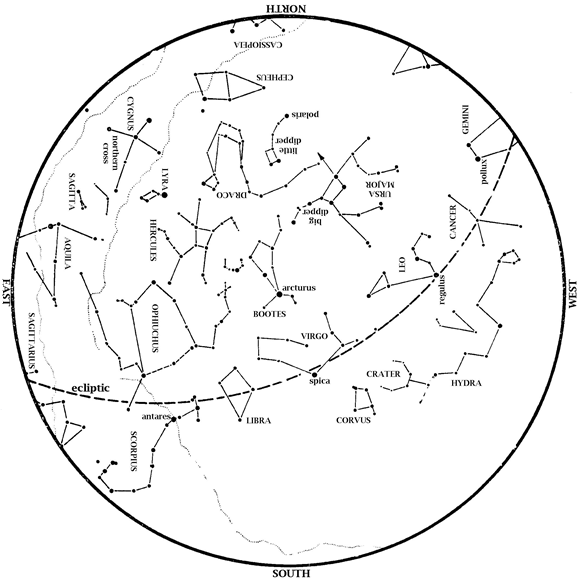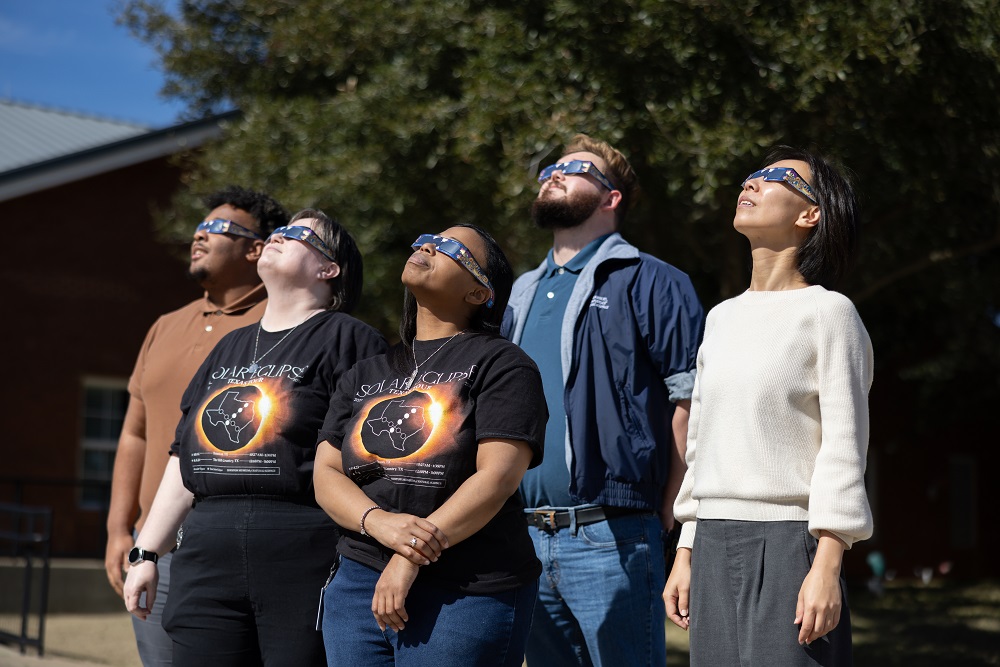Now that the holiday season is upon us, let’s get to know a plant commonly associated with the festivities, the Poinsettia (Euphorbia pulcherrima). Native to Mexico, they are known as ‘Flor de la Noche Buena’, or ‘Flower of the Holy Night’. Poinsettias are members of the Spurge family, Euphorbiaceae. A little fact: Euphorbia is named after the Greek physician, Euphorbos, who said that one of the plants in this family made a powerful laxative!

They are tropical perennial shrubs and can reach up to 15 feet tall. The bright red “flowers” of the Poinsettia are actually modified leaves called bracts. The inflorescence of the Poinsettia is called a cyathium and since they don’t have actual petals, the showy bracts are what attract pollinators. The original Nahuatl name for the plant is ‘Cuetlaxochitl’, which translates as “flower that withers, mortal flower that perishes like all that is pure”. The red bracts were used by the Aztec people to dye fabrics a purplish-red color and they also used the plant sap medicinally for reducing fevers. Poinsettias have gotten a reputation as being highly poisonous, however, they are not fatally toxic. Ingesting parts of the plant may upset your stomach, but that’s pretty much it. The white milky sap is a distinguishing characteristic of the Euphorbia family and can cause dermatitis in those who are susceptible.
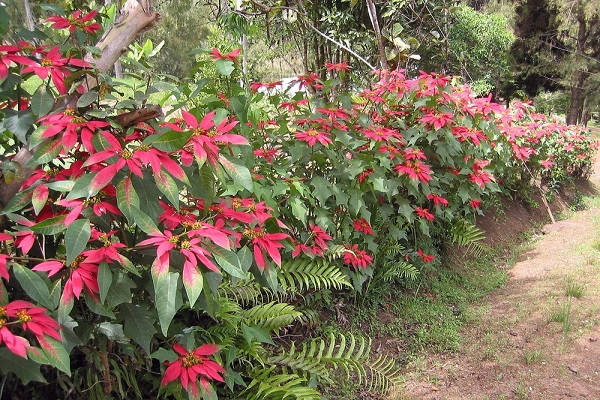
The first wild Poinsettias were taken into cultivation by Joel Roberts Poinsett, the first US Ambassador to Mexico, who, among many other things, was an amateur botanist. One of the horticulturists Poinsett gave cuttings to was Robert Buist of Philadelphia who saw potential in this plant for commercial production, calling it a “blaze of beauty” and named it ‘Euphorbia Poinsettia’ after Poinsett who first introduced it in the 1830s. In the 1920s, a farmer in Southern California, Paul Ecke Sr., started developing different varieties and growing them in mass quantities. He was also clever at marketing and would give plants away to TV studios and women’s magazines to drive up the demand. By standardizing the growing techniques and widespread marketing, his farm was responsible for about 90% of commercial poinsettia production and made the plant a popular modern Christmas tradition.
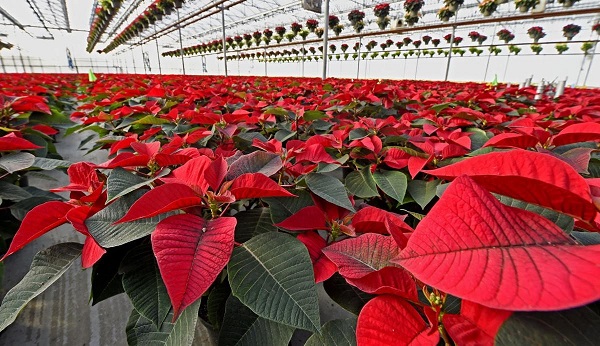
The sales season for Poinsettias is only about six weeks so horticulturists need to have their growing techniques on point. The key to getting Poinsettias to produce their showy bracts is photoperiodism. This is a specific length of time a plant needs to be kept in complete darkness each day for several weeks to initiate the color change. This would happen naturally after the vernal equinox, when daylength gets shorter and the time in the dark increases. Plant nurseries are able to force plants into flowering by increasing their “nighttime” each day to about 12 to 14 hours with no interruptions for about six to eight weeks. Not only that, to keep the plants from “flowering” too early, horticulturists will turn the lights on in a greenhouse for three minutes every hour from 11 p.m. to 1 a.m. to interrupt their night time and keep them green. The plants are even further manipulated with chemical growth inhibitors to keep them short. They will also be treated with a specific type of bacteria that makes them more dense, perfect for a potted plant.
These days Poinsettias come in lots of different colors like yellow, white, pink and variegated, as well as the traditional red.
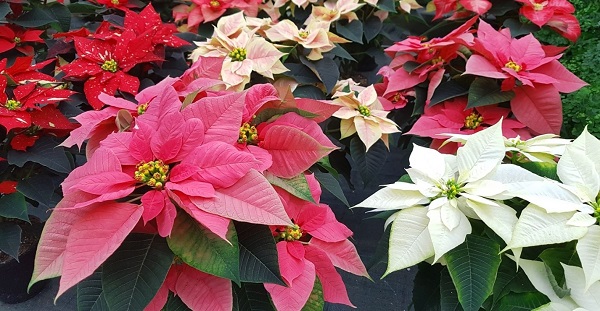
We Texans even have a native Poinsettia too, Euphorbia cyathophora, or ‘Fire on the Mountain’.

So, next time you see a Poinsettia, you can appreciate it’s rich history as well as the lengths it took to bring it to your gaze.


